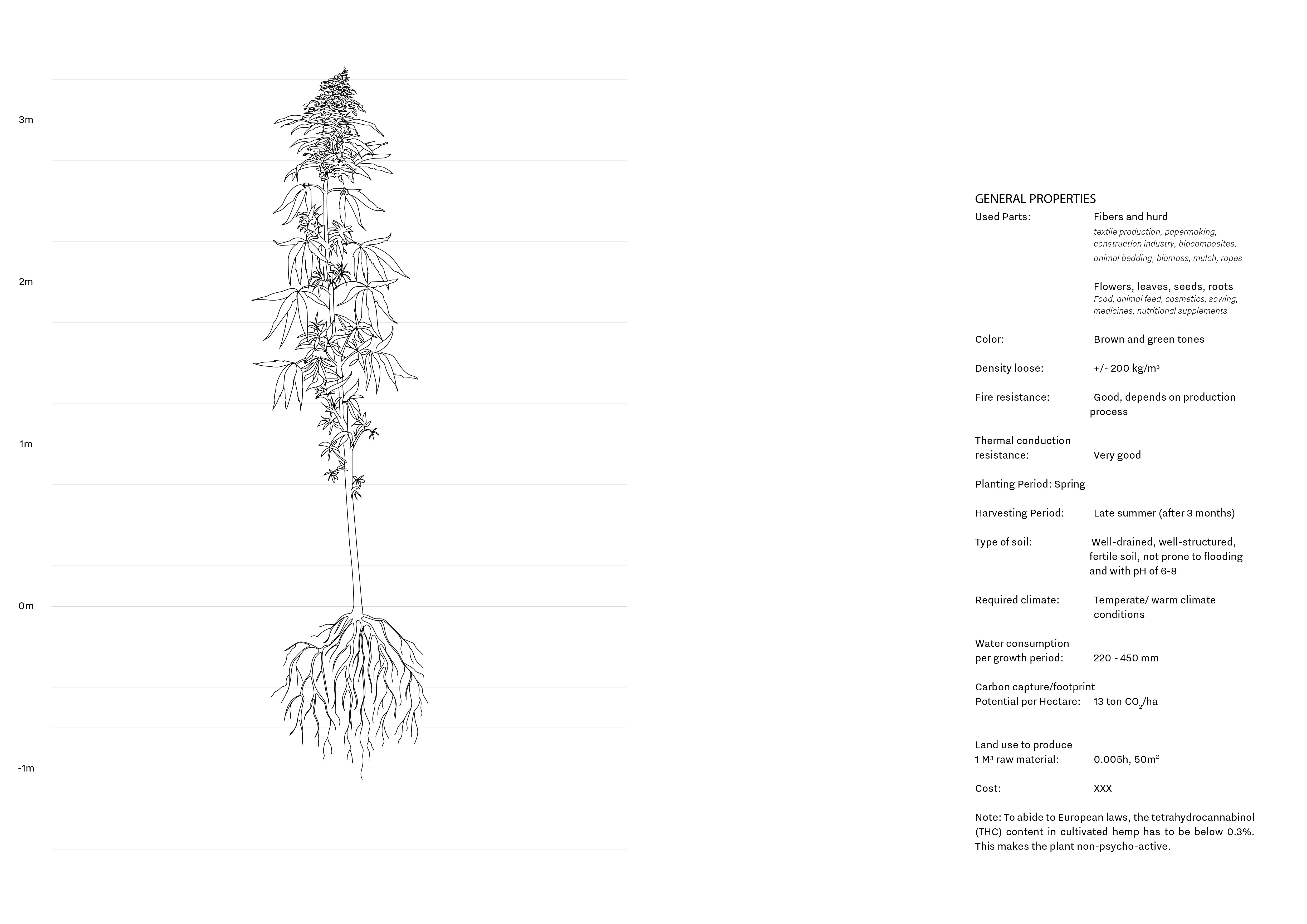Hemp
Industrial hemp is part of the Cannabaceae family and is one of the world’s oldest crops. Its use declined in the twentieth century, also due to the introduction of synthetic fibers. Recently, hemp has attracted renewed interest owing to its many possible applications and numerous environmental benefits. It‘s easy to produce. Its rapid growth (can grow up to 0,3 m in a week) and its ability to suppress weed growth make it easy to integrate into crop rotation. It can be considered as a carbon-sink: carbon captured and stored during growth of hemp is higher than carbon footprint of cultivation process.The long roots have a significant potential for regenerating the soil and purifying it from pollutants. It‘s a versatile plant, adapting to different climatic and pedological conditions, and all of its parts can be used in various applications. We selected this plant mainly because of its versatility (processed products coming from the stem -fibers and hurd- can find various uses in the construction industry) and its potential of depolluting soil if grown on site.
Also when used in construction, hemp is durable (gains strength over time), lightweight, non-toxic, fire-resistant, mould and pest resistant, regulates moisture and is a good insulator. It can also be recycled at end of life cycle. In Belgium, the use of hemp in construction is not the most common but is developing. Some pioneering companies such as Isohemp, Exie, Valbiom or Chanvreco are leading the way nationally in this field. Currently, more than 70% of the EU’s hemp production is coming from France, Italy and the Netherlands.






